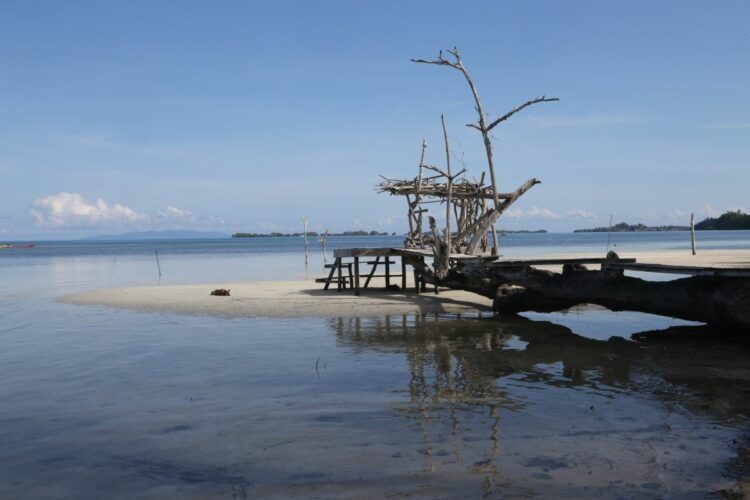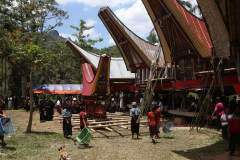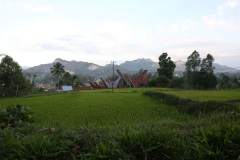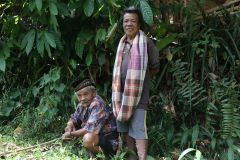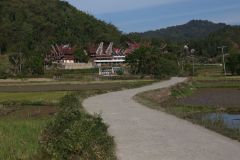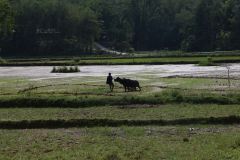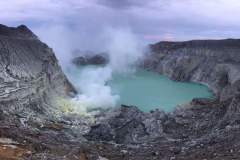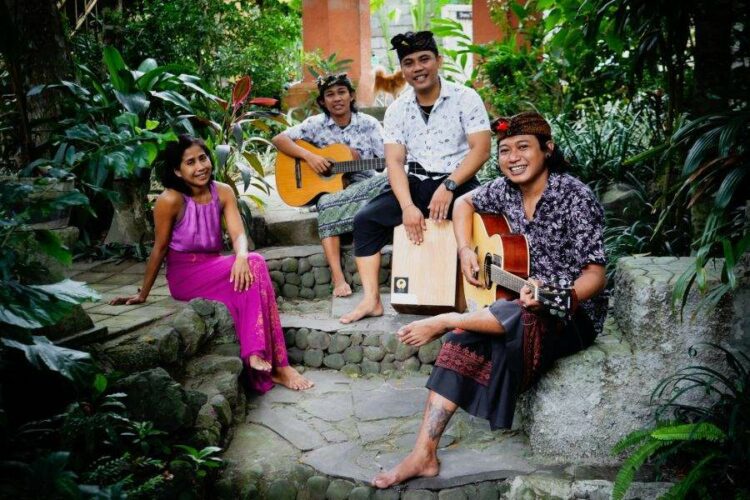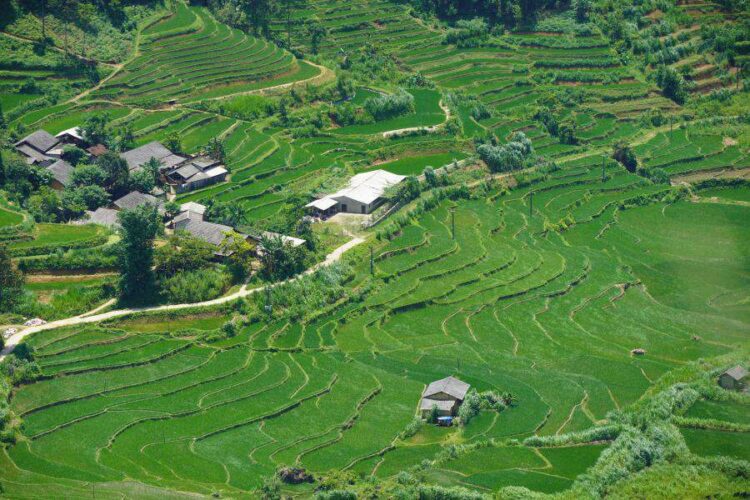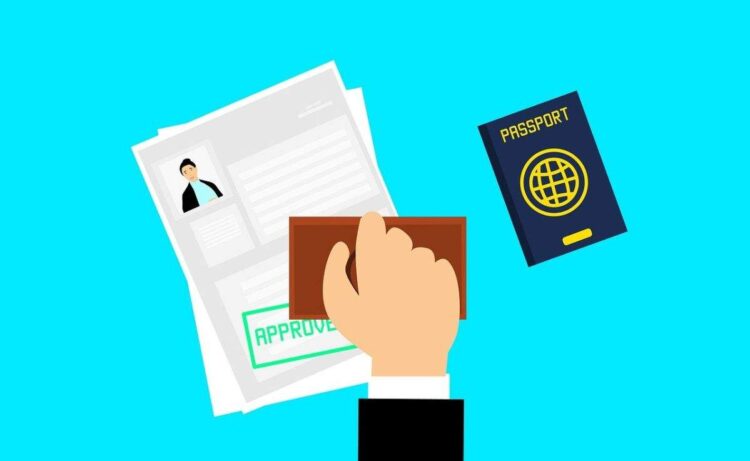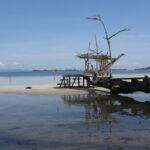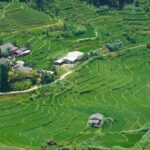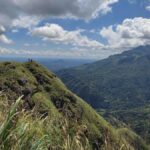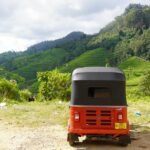Traveling Indonesia
Whenever we write about traveling Indonesia, we don’t know where to start. I had the opportunity to do a semester abroad in Yogyakarta, which offered me even deeper insights into everyday life. All in all, I spent just over a year of my life on these gorgeous islands. Above all, I want to show you that Indonesia is more than just surfing & yoga in Bali, a bit of island feeling on the Gilis and an Instagram photo in front of Kelinging Beach on Nusa Penida. This page serves as a rough orientation. On the subpages you will find more detailed information about the individual tips.
A gigantic plant and animal world, an incredibly friendly population, fire-breathing volcanoes and delicious food – you can expect all this from your trip to Indonesia! Especially the melodic sounding “Sama-Sama”, which means “here you go” in Indonesian, will be remembered by many. The size of the country is often underestimated. Indonesia is about 5 x bigger than Germany. However, it should be mentioned here that the roads are mostly not well developed and the country stretches over 5 large and 17,500 small islands. Therefore, you can plan a whole day for a distance of 200 km. The big islands are Papua, Borneo, Sumatra, Sulawesi and Java. Most of the population is Muslim, but there are also some Christians (especially on Papua and parts of Sulawesi). The Balinese population is predominantly Hindu. The capital of Indonesia is Jakarta and is located in the east of the main island of Java.
Top 11 sights places to visit during your trip to Indonesia
To break down our Indonesia sights to my top selection – that was really a difficult task. I can think of sooo many more highlights – but let’s leave it at these. As you can see, my highlights are scattered all over the country. They should give you inspiration for an unforgettable trip! It should be said that I do not recommend to visit all the highlights within 4 weeks, if only for the sake of the environment. Take your time and enjoy the islands. For each of the big islands you should plan at least 2-6 weeks. I hope you forgive me for the bad photos. During my first visit, I did not expect that I will eventually have my own blog….Here are my absolute highlights and travel tips!
1) Raja Ampat (Papua)
For me, clearly the paradise on earth. The beauty of the Maldives combined with the simplicity of Indonesia, freshly prepared local food and an incredible reef. Who expects a luxurious apartment is here out of place. Internet is also not available in most of the accommodations. Most of the accommodations are directly on the beach, equipped with a mattress, a closet, a mosquito net and a hammock on the small veranda. Here you can read more about arrival and departure and what you should consider. On this page you will find more detailed information for an unforgettable vacation in Raja Ampat.
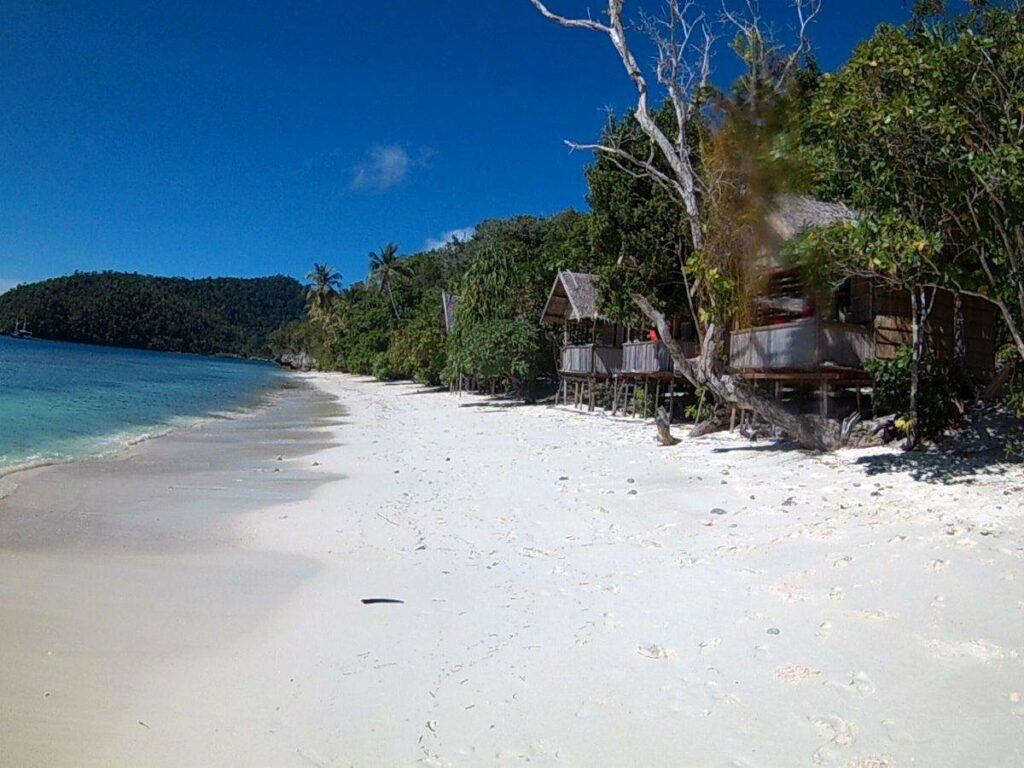

2) Tana Toraja (Sulawesi)
If you are looking for unforgettable moments, you will love Tana Toraja on the island of Sulawesi. The Toraja live in the highlands of Tanah Toraja and are known for their ship-like houses and the incredible funeral ceremonies where it gets pretty bloody. A funeral ceremony usually lasts at least 3 days. An absolute MUST for every adventurer. Besides the cultural things you can discover here, the highlands are also perfect for hiking. Here you can find more about the funeral ceremonies and important information for your visit to Tana Toraja.
3) Mount Rinjani (Lombok)
Another unforgettable highlight is the ascent of Rinjani on the island of Lombok. The sweaty climb to the summit requires a good physical condition and takes a total of 3 days. If you don’t want to go to the summit, you can also book the much less strenuous tour to the Rim (edge of the volcano crater). This takes 2 days and is doable for everyone. But check in advance if Rinjani is open, because it is mostly closed from December to April due to the rainy season. On this page you will find everything you need to know for the ascent of Rinjani.
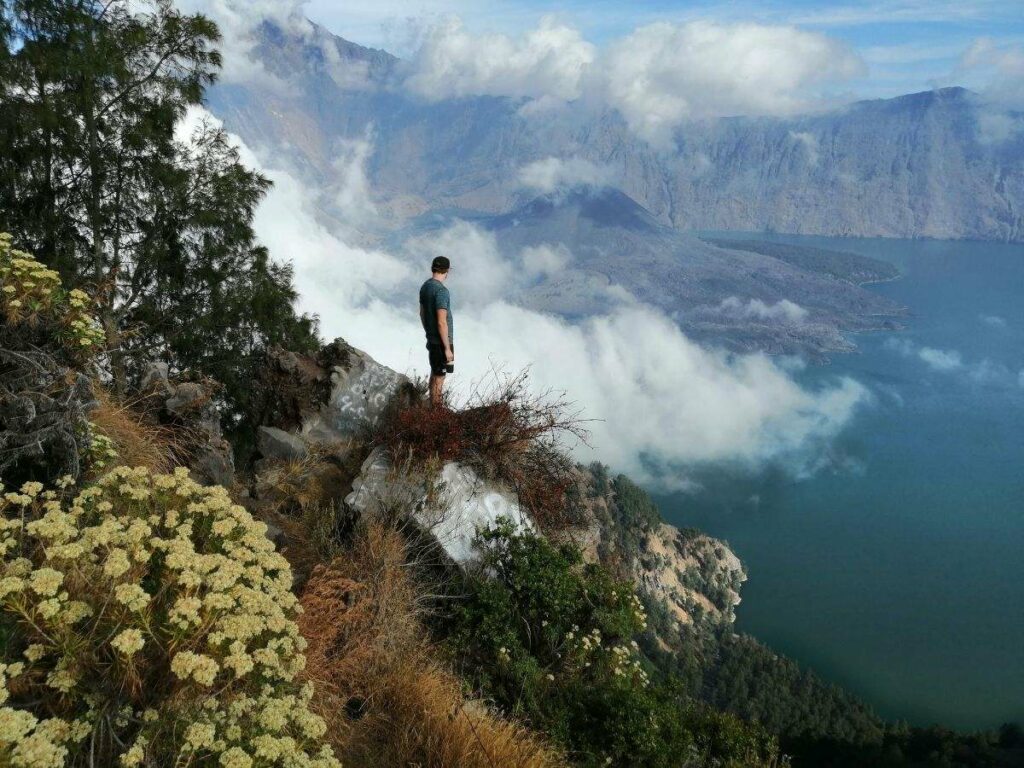

4) Bukit Lawang (Sumatra)
An absolute must for every animal lover is the small village Bukit Lawang on Sumatra. There are only 2 places in the world where you can meet wild Orang Utans, Sumatra and Borneo. Bukit Lawang is located at the foot of Gunung Leuser National Park. It’s quite a queasy feeling when you suddenly find yourself standing in front of a fully grown male orangutan and exchanging awestruck glances. I recommend a tour of several days with an overnight stay in the jungle.


5) Togian Islands (Sulawesi)
A somewhat cheaper alternative to Raja Ampat are the Togian Islands on Sulawesi. You can reach them by ferry from Ampana or Gorontalo. Beautiful beaches, small accommodations with few visitors and delicious freshly prepared food can be expected on the Togian Islands. The underwater world is also not to be missed. An absolute specialty is the Jellyfish Lake, a salt lake full of non-toxic jellyfish that you can swim with and touch.
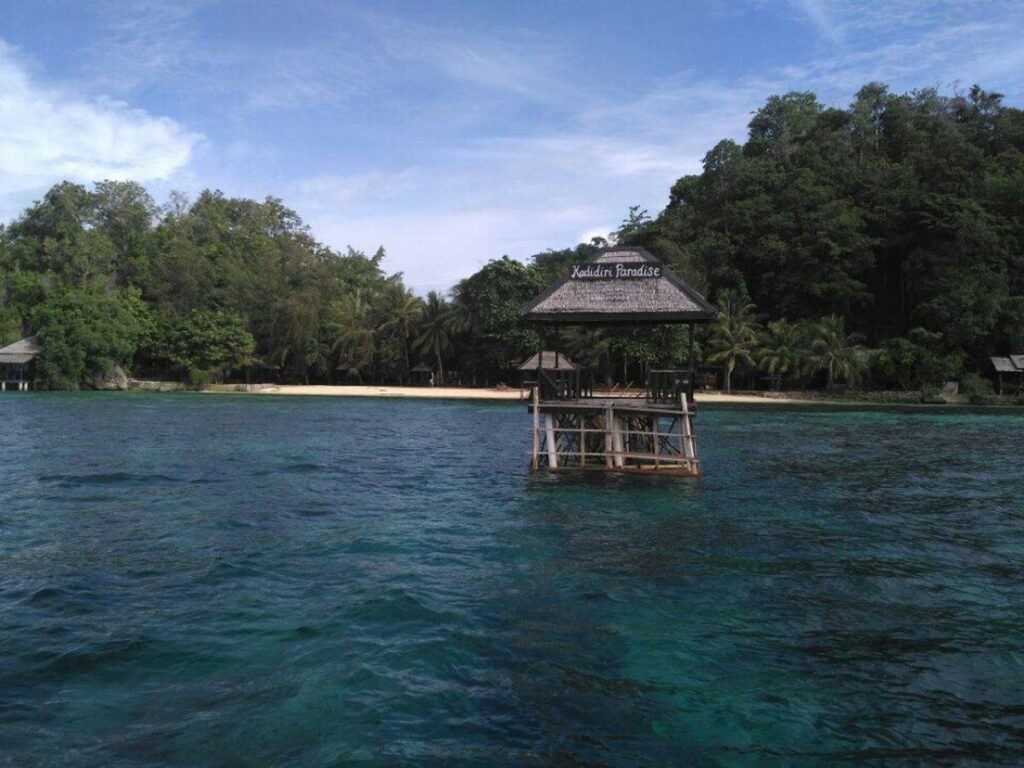

6) Yogyakarta (Java)
The city where I lived for half a year to study. Relatively centrally located in the middle of Java, it is something like the cultural capital of Indonesia. In Yogyakarta itself there are some malls, a great bar street, delicious street food, the Prambanan temple and very many students. In addition, Yogyakarta is ideal as a starting point for visiting Karimunjawa, the beaches in the south, the temple complex Borobodur, climbing the volcano Merapi and and and. If you are looking for batik clothing, you will also find it here.
7) Kawah Ijen (Java)
Ijen offers an absolutely unique natural spectacle. In the middle of the night you start with the ascent to have a look at the blue glowing sulfur flames of the volcano crater still in the dark. Besides the blue sulfur flames, the crater lake with its turquoise and steaming water is also an absolute highlight. The starting point for climbing the volcano is the town of Banyuwangi at the east end of Java. From Banyuwangi you can also take a ferry to Bali within a few minutes. Again, you should check in advance, as the volcano remains closed at certain times. What is on one side a wonderful natural spectacle means for some locals a short life. Follow the link and read everything you need to know about Kawa Ijen.
8) Karimunjawa (Java)
About 6h north of Yogyakarta is the small island of Karimunjawa. The small archipelago with the dreamlike islets offers a paradise-like place for a little time out or a creative break. Simply let your soul dangle on the beach, enjoy the peace and quiet, and in the evening snack on something at the food market – that’s the way to live.
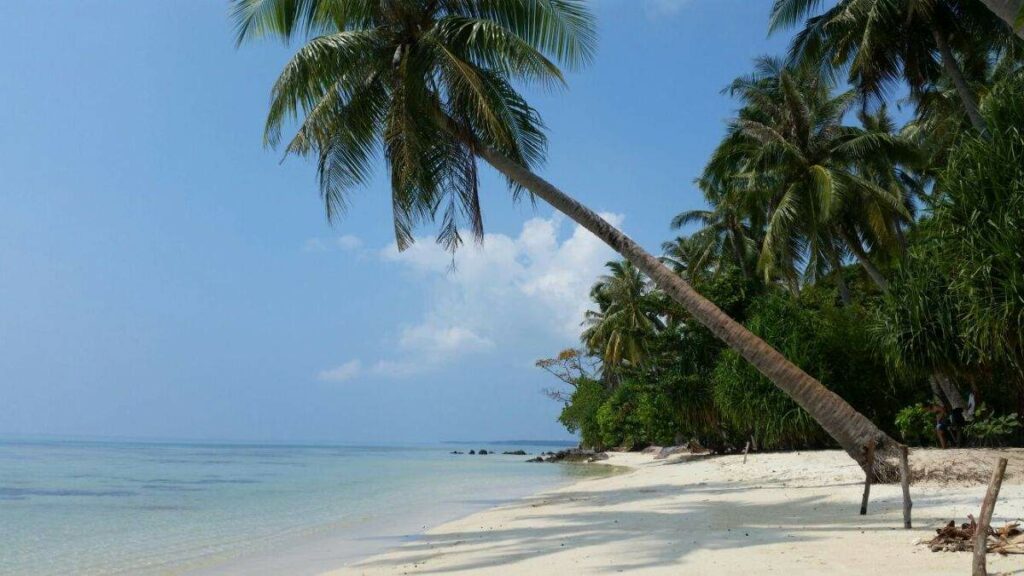

9) Ubud (Bali)
For me, unfortunately, the only highlight what is left of Bali… The town of Ubud with its special flair is the cultural center of the island. Here you can find some great little shops and accommodations. A special attraction is the temple Pura Taman Saraswathi which is dedicated to the Hindu goddess of wisdom. The monkey forest in Ubud is also worth a visit. I advise against visiting the Tegalalang rice terraces during the high season, as the way there alone is already very crowded.
10) Bromo (Java)
Surely each of you has seen Bromo on a poster or dekstop background. The volcanic crater, surrounded by a lunar landscape is already a unique natural spectacle. The “ascent” is like a leisurely walk and can be done without a tour. The paths are relatively clear. Here the choice of the right place is crucial if you want to experience the sunrise for yourself. Be careful and don’t get ripped off if you’re thinking of checking out the volcano. Here I show you exactly what to look for when you want to visit Mt. Bromo.
11) Batu Karas (Java)
The small village is located about 6h away from Yogyakarta and is ideal for surf beginners. The journey is made by train and cab. Since the last part of the route is not very well developed, there is no public transport here. Batu Karas itself is a small village situated directly at the sea, which is mainly visited by friends of surfing. There is an old bamboo bridge over the river that can be passed by scooter and the Green Canyon for the more adventurous with jumps of about 10 meters, Tarzan swings, waterfalls, caves, etc.
What you should know before traveling Indonesia!
- In Indonesia, the clocks tick differently – get used to it!
- There is no word for “vegetarian” or “vegan” in the Indonesian language.
- The language is super simple, learn a few words in advance, it always goes down well.
- The travel guide about Indonesia by “Lonely Planet” is the biggest junk.
- Be prepared to take hundreds of photos with locals. Especially dangerous are school classes 😉
Transportation in Indonesia
Depending on the location, the choice of transportation in Indonesia is nevertheless very limited. Between the large islands, the flight is often the only reliable means. Otherwise, the main means of transport is the bus, the equipment varies immensely from luxury liners to unair-conditioned minibuses. Of course, there are also air connections within the islands, but these are routes that can be avoided.
Bus
Buses run almost everywhere in Indonesia and are very different in terms of their level of comfort. If you go from Makassar on Sulawesi to Tana Toraja, you get an absolute luxury bus with sleeper seats and enough legroom. The bus from Tana Toraja to Ampana, on the other hand, is a minibus, often unair-conditioned, sometimes overcrowded and takes about 16-23 hours. This is just to illustrate how different the means of transportation can be in successive sections during your travel to indonesia. Also in Indonesia it is so that there are routes which were created mainly for tourist purposes and others again which are served mainly by the locals. Therefore, the prices also differ greatly. Longer bus rides usually cost between 5 and 20 €, depending on the route and island
Angkot
The small minibuses or microbuses mainly operate within cities or between villages. They are usually the cheapest means of transportation. One ride costs about 5,000 – 10,000 Rupiah, depending on the route and location.
TrainRail transport is mainly found on the main island of Java. The network extends from Merak (east of the island near Jakarta) to the far west to Banyuwangi, right on the border with Bali. In between, actually all important spots are served. So if you want to travel through Java, you can easily do this by train. I recommend you to check timetables and tickets in advance, so you won’t be disappointed if a train is already fully booked. Trains usually leave in the morning. There are also occasional train routes in Sumatra and soon in Sulawesi.
Ship
Some routes can only be covered by boat or ferry. These include Raja Ampat, the Togean Islands, Karimunjawa, Nusa Penida and Bunaken. There are also occasional ships that connect the major islands, but sometimes no one knows their departure times and it can sometimes take 14 days to arrive at the destination. The safety of these ships is sometimes also very low. However, I have not had any bad experiences with ships in Indonesia so far.
Taxi
Sure, the most convenient way to get around, after flying, is by cab. Cabs can be found everywhere and are also quite cheap. I myself fall back very reluctantly to the cab, because it is for me to undertake schweistreibende trips to be able to appreciate the reached all the more. To go by cab, take a picture, get in and go to the next highlight is one of the ways to travel with which I myself can not do much.
Flight
Were the airfares a few years ago still comparable with Ryanair flights, I was astonished when I was again in Indonesia in 2019 and each flight has cost about double. There are plenty of airports in Indonesia, actually every city has its own small airport that offers some flights within the country.
Go-Jek
If you’re traveling alone and want to get around within cities, the app Go-Jek is a good choice. Go-Jek offers both scooter and car cabs that take you to most destinations within the city for about $1 per ride. The special feature of Go-Jek is that you can order masseuses (really only masseuses without happy endings, etc.), train tickets, food, medication, etc. It’s like a delivery service for everything. Quasi a delivery service for everything. Of course, the drivers also have a spare helmet for you.
Acommodations while traveling Indonesia
Finding accommodation in Indonesia is relatively simple. In general, if you are traveling outside of the high season, I recommend finding accommodation locally. Here you can often make a real bargain and also find more unusual accommodations. Again, if you are on an island and want a particularly nice and exclusive accommodation, you may want to book in advance. Couchsurfing is also possible in Indonesia – but you will find it more in the larger cities.
Entry to Indonesia
If you are planning your vacation in Indonesia, you should look into the different options for a visa beforehand. In principle, the visa issuance is super unproblematic. Depending on the desired length of stay, there are 3 options for you. Your passport must be valid for at least 6 months for all visa types and you still need free pages, but that should be clear.
Visa Free Visit (up to 30 days)
You can even enter visa-free for a stay of up to 30 days. For this purpose there is the possibility “Visa Free Visit”. This visa can NOT be extended and you need a return flight.
Visa on Arrival (up to 60 days)
The VoA is, as the name suggests, available on entry and costs 35,- US for a stay of 30 days. The visa can be extended once for a fee of 30,- US for another 30 days. So you can stay 2 months in Indonesia with a Visa on Arrival. Here is a tip from my side: Depending on the place of stay, the visa extension can take several days, in Java it usually goes fastest. The data must first be transmitted electronically and as soon as the visa is ready, you will receive a call. To do the extension you have to go to an “Imigrasi”, which you can find in all bigger cities.
Visa before arrival (up to 1/2 year)
If you are thinking of spending more than 60 days in Indonesia, you should apply for a visa at an Indonesian embassy in Germany beforehand. Please keep in mind that the processing time can take up to 6 weeks. With this visa you can stay up to 6 months in Indonesia. The visa can be extended 4 times for 30 days. You can find more detailed information on the websites of the embassies and consulates. What I can tell you: You don’t have to go there, the whole thing can be done by mail.
The best time for traveling Indonesia
It is difficult to give a general answer, because it varies from region to region. The “problem” is not the seasons like here, but the monsoon. The temperature is relatively constant throughout the year, only in the months of November to March usually fall the most precipitation. At the same time, a vacation in Indonesia in the off-season can also have its advantages, because of course you meet much fewer tourists. I myself was in Indonesia (Java and Sulawesi) in 2019 from September to December and hardly got any rainfall. In the so-called “Rainy Season” you often get to deal with rainy hours in the afternoon. Depending on the year, it can be that you hardly get rainfall or even complete continuous rain.
Peak season: From April to October (Little rainfall many tourists)
Low season: November to March (Many rainfall less tourists)
Food and drink guide for your trip to Indonesia
Oh man… this part could stretch over 100 pages. Each region (not island) has its own dishes and of course many variations to the classics. I have put together a selection of classic dishes and those that I found particularly tasty. I have written down some important vocabulary around the food: As you can see, the names of most dishes are simply their contents strung together.
| Indonesisch | English |
| Nasi | Rice |
| Mi | Noodles |
| Ayam | Chicken |
| Tahu | Tofu |
| Ikan | Fish |
| Telur | Egg |
| sedikit pedas | A bit spicy |
| tanpa gula | Without sugar |
| goreng | fried |
| bakar | grilled |
| Kangkung | Water spinach |
| Jamur | Pilze |
Sambal: The Indonesian chili sauce of which certainly everyone has heard. There are thousands of variations, but they all have one thing in common – they are hot! Whether with mango, sardines, spinach, eggplant or lime, the sauce simply belongs.
Nasi Goreng: The classic! Goes always, makes full and there are him in all possible variations. Classically, it is fried in soy sauce with vegetables, chicken and egg. Nasi Goreng is one of the cheapest dishes and costs between 5,000 – 25,000 Rupiah depending on the island.
Mi Goreng: The equivalent of Nasi Goreng – only with Asian egg noodles instead of rice. Variations are Kwetiau Goreng (thick rice noodles) and Bihun Goreng (thin vermicelli).
Gado-Gado: Also an absolute classic of Indonesian cuisine. Gado-Gado is usually served with boiled vegetables (beans and potatoes), lettuce, hard-boiled egg, tempeh (fried fermented soybeans), lontong (quasi rice dumplings) and fried tofu. The dressing of the “salad” is a delicious peanut sauce.
Sate Ayam: Grilled chicken skewers with peanut sauce, often also served with lontong (rice dumplings).
Soto Ayam: Chicken soup is a very classic lunch food in Indonesia. This also comes in umpteen variations. It is often a clear vegetable broth, with fried chicken, rice and vegetables. It is often accompanied by soy sauce.
Ayam bakar: Indonesian grilled chicken is usually grilled in a marinade of sweet soy sauce.
Martabak: Those who like it particularly greasy will love Martabak. The “Asian pancake” is filled with either sweet ingredients such as bananas, chocolate, peanuts, sprinkles and Indonesian cheese (Keju) or hearty with egg, spring onions and chicken. The ingredients can be arranged at the small shops themselves as desired.
Ca Cangkung: Fried water spinach in soy sauce. Can also be found almost everywhere. Usually enriched with a lot of garlic. Very tasty!
Capcay: Capcay is nothing more than fried vegetables in a thickened sauce. Usually with soy sauce and meat. But can also be ordered vegetarian.
Tempeh: A classic side dish is fried tempeh. Tempeh is fermented soybeans. Tempeh is often sold in the supermarket wrapped in banana leaves. But there is also a sweet version (Tempeh Manis).
Nasi Campur : Also a very popular dish, which exists in umpteen variations. Simply put, you get a portion of rice with various side dishes. These can be vegetables, fish, meat, tofu, tempeh and crab chips.
Jus Alpukat: The most satisfying juice I have ever drunk! Avocado juice with chocolate syrup – delicious but pretty perverse! 😀



